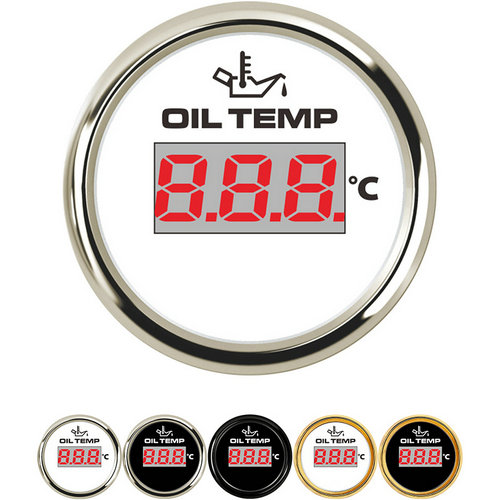oil temp gauge sticking
Oil temperature sensor failure or aging. The automobile oil temperature gauge should be that the scale pointer of the oil temperature gauge will change with the change of the oil temperature. Failure or aging of the oil temperature sensor will cause the oil temperature gauge to feel no oil temperature, and it is certain that the oil temperature gauge will not move. It is also possible that the oil temperature sensor plug is faulty. Line problem. The pointer of the oil temperature gauge is faulty. In general, if this problem occurs, it is recommended to go to the garage, use the automobile computer detector to detect the engine system, read the fault code, look at the dynamic parameters, and perform component testing to accurately find the problem.
When the engine is working, the oil pressure alarm lamp on the instrument panel lights up or flashes (as shown in the figure below), or the reading of the oil pressure gauge is always lower than the specified value. If it is serious, the engine will make abnormal noise. At this time, the engine should be stopped in time for further detailed inspection.
If the oil quality of the lubricating oil is poor, replace the engine oil and filter, and clean the lubricating system if necessary. If no abnormal noise is found during the above basic inspection, remove the oil pressure sensor or main oil duct blind plug and connect the oil pressure gauge. Connect the oil pressure gauge to the screw hole of the oil pressure sensor. When the engine oil temperature is above 80 ℃ and the speed is about 2000r/min, the oil pressure should generally not be lower than 200kPa (see the corresponding vehicle maintenance manual for details). If the oil pressure value meets the requirements, it means that the fault is in the circuit of the oil pressure alarm system, which is a false alarm. Check the relevant components or circuits of the oil pressure alarm system; If the oil pressure is obviously lower than the normal value or zero, it indicates that there is a real fault in the pressure lubrication system, and the oil pump, pressure limiting valve, filter, and even oil duct of the lubrication system should be further inspected. If the lubrication system is normal, check the fit clearance of the crankshaft main bearing, connecting rod bearing, camshaft bearing and other parts. If the oil pressure is too low due to excessive fit clearance, abnormal engine noise is often accompanied. Before disassembling the engine, pay attention to auscultation.
 English
English 



Get a Quote / Info